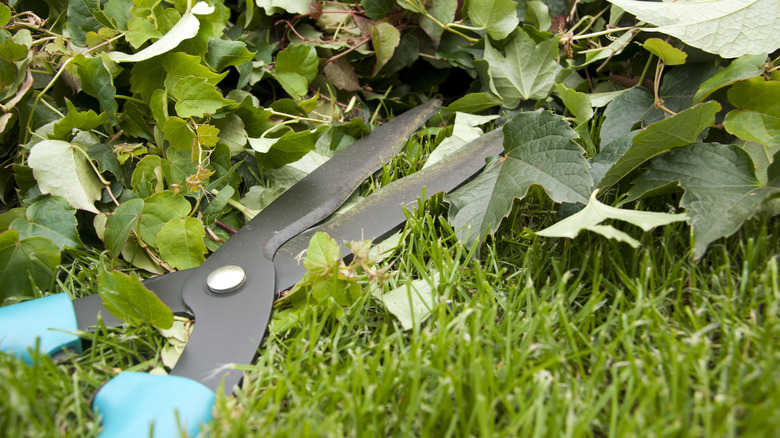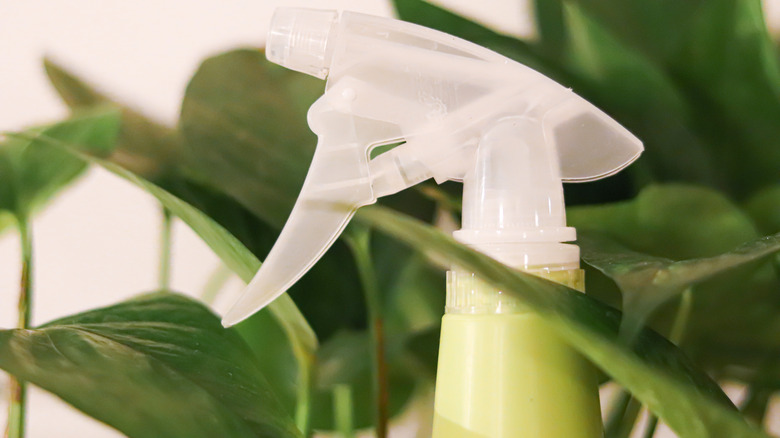The Kitchen Staple That Makes Getting Rid Of Ivy Even Easier
The stately look of English ivy growing on a red brick wall might seem romantic, but the plant, which is listed as invasive in many states, can become an out-of-control evergreen monster in no time — even when you try to keep it under control. Persistence is the key to getting rid of your English ivy. It's a very hardy plant, which makes eradicating it all the more difficult, but you most likely have something in your kitchen that can do the trick — white vinegar.
While it will necessitate some muscle, the application of vinegar can help you get rid of this vine for good. The plant is all too happy to spread far and wide as it sends out runners, and once established, it clings like a jilted lover to wherever it is attached. In doing so, it can cause great damage to the structure of your home — so pull on the garden gloves, grab your shears and a big jug of vinegar, because English ivy is known to put up a fight.
Whack, hack, and chop
Before using the vinegar, you'll first need to remove as much of the plant as you can with whatever tools you have available. Also, be sure to damage its leaves in preparation for them to absorb the vinegar. English ivy leaves are waxy, and as a result, it's more difficult for any substance to get into them and thus travel to the roots.
Late summer or early fall is a good time to tackle the project because if the job isn't fully completed in the cool autumn months, the destructive compounds will overwinter in the roots to continue breaking down the plant for easier removal in the spring. Some people may try using fire to control English ivy that has run amok, but burned leaves don't allow vinegar or any other substance to be conducted to the roots where it can kill the entire plant, so burning isn't usually the best option. You may have to reapply the vinegar repeatedly until the ivy is gone.
Vinegar to the rescue
After trimming back your unruly English ivy and nicking the leaves so that they are more absorbent, you will want to apply neat vinegar or a vinegar solution so it can begin to work its caustic magic. Some gardeners add salt and/or dish soap to the vinegar, which helps to keep the solution on the leaves a bit longer. Salt has been used for millennia as a preservative because of the way it dries out food; a similar principle applies to killing plants in that salt deprives the plant of needed water.
A typical recipe is a gallon of vinegar (nothing expensive, though there is a gardener's vinegar that has a higher acid percentage), a cup of salt (regular table salt will do), and a tablespoon of dish soap. If you decide to go with an herbicide, use ones containing glyphosate. While it isn't organic or as natural a substance as vinegar, it has proven to be effective.


